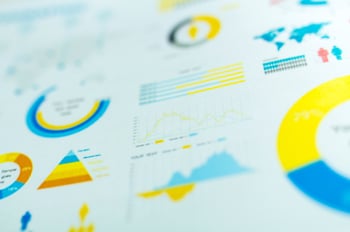Even the Harvard Business Review Prints Bad Pricing Research
by Donald Davidoff | Jul 2, 2015 12:00:00 AM
 One of the joys in my life is reading the Harvard Business Review (I know, it says a lot about me needing better hobbies). I recently subscribed to a very interesting service they have, “The Daily Stat,” which sends me an interesting an often provocative statistic or piece of research each morning.
One of the joys in my life is reading the Harvard Business Review (I know, it says a lot about me needing better hobbies). I recently subscribed to a very interesting service they have, “The Daily Stat,” which sends me an interesting an often provocative statistic or piece of research each morning.
The other day, I received one that declared that “customers take a dim view of a big CEO-to-worker pay gap,” concluding that “Research participants were more willing to buy towels from a company with a small gap between CEO and worker pay than from one with a large gap.”
I don’t doubt that many customers would take a dim view of a high CEO-to-worker pay gap, and I don’t intend to debate the issue of pay gap itself. I do take exception to the methodology of the analysis, especially from such a prodigious institution as the Harvard Business School. Again, quoting directly from the email:
In the experiment, the large-gap company was said to pay its CEO 1,000 times more than the average worker (that’s believed to be the gap size at Walmart). Smaller-gap companies ranged from 5 to 1 to 60 to 1, but participants showed the same preference across the board. In fact, more than 30% said they would pay more for the towels when given the option of two different companies with two different compensation ratios.
While it’s good that they used a size similar to what is believed to be the gap at Walmart as a reasonable test case, the reality is that the entire experiment is contrived. They had to tell people the gap in the two cases which is so far afield from any normal purchase experience that it puts into question whether the result would ever represent what happens outside of the experimental setup.
More importantly, the entire premise of the conclusion is based on what people SAY THEY ARE WILLING TO PAY (my caps and bold emphasis). Surveys of what people SAY they will pay are notoriously flawed as a means of predicting what they ACTUALLY WILL PAY.
The only way to test this theory would be to put two identical sets of towels on the same shelf of a store with a story on each about the practices of the companies producing each and see what percentage of people actually pay more for the same item just because they view the pay practices of the manufacturers as more fair. Judging from the number of people trudging into Walmart, flying Spirit Airlines and buying generic food items, I suspect a great deal will “take a dim view of high CEO-to-worker-pay gaps” but end up taking a dimmer view of “lower bank accounts by paying more for a commodity like towels.”
Whether my hypothesis is correct can’t be proven or un-proven by survey, only by physical experiments.